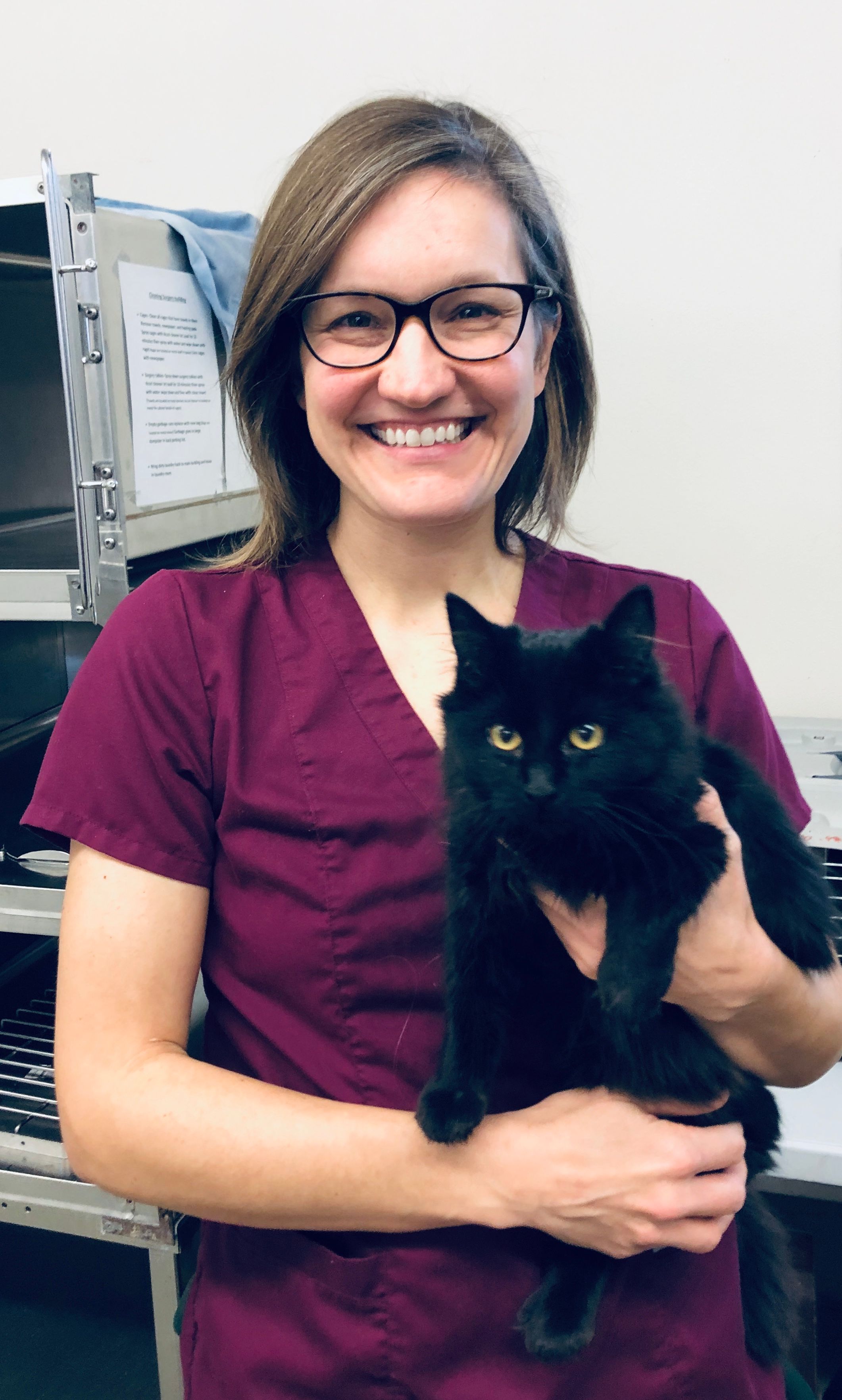
Have you ever walked into a store that sells pet food and felt completely overwhelmed?
I know I have, and I’m a veterinarian. There are thousands of dietary choices for our co-pilots, our couch potatoes, our 2 a.m. wake-up calls, our running buddies, and our hunting partners. From natural to organic, exotic meats to vegetarian, grain-free to raw diets, the myriad choices can lead to confusion about what is best for your pet. I want to focus on one of the more popular feeding trends: the grain-free diet.
What does “grain-free” mean?
Grain-free means the food has a substitute carbohydrate source, such as potatoes, lentils, quinoa or peas, in place of grains. Grain-free pet food lines the shelves these days. In 2011, grain-free diets made up just 11 percent of the pet food market, and in 2017 that number had increased to 44 percent!
Are grains bad for my pet?
Grains are often called “fillers,” but they are an excellent source of energy, and contribute valuable vitamins, minerals, essential fatty acids, and fiber to pet food. Some of the common grains found in pet foods are rice, corn, and wheat. The vast majority of dogs (and cats) are very good at utilizing and digesting nutrients from grains. In fact, there is no proof that grains contribute to pet health problems, except in the rare case of adverse food reaction secondary to a grain. Food allergies account for less than 10 percent of all canine allergies. Your dog is far more likely to be allergic to the indoor and outdoor worlds around her. And when a food allergy is present, it is usually due to an animal protein such as dairy or beef, not grains. Cats can have food allergies, too, and like dogs, the cause is most often an animal protein.
Why did grain-free diets become so popular?
Some of you may remember the melamine scare in March 2007. For those who don’t, wheat flour imported from China was adulterated with a nitrogen containing compound (melamine) to make it look like wheat protein (gluten), a more valuable ingredient. Unfortunately, the melamine combined with an acid in the pet food and caused acute kidney failure in dogs and cats. This was a scary situation for both pet owners and veterinarians, and a wake-up call for the Food and Drug Administration (FDA). The Food Safety Modernization Act was soon passed, and the FDA worked more closely with the Association of American Feed Control Officials (AAFCO) to make food safer. With greater oversight and inspection came improved compliance (yay!), but also resulted in more pet food recalls (yikes!). This growing fear of recalls, coupled with popular human diet trends (Atkins, Paleo, low-carb) and LOTS of attractive marketing led to a quest for pet food options with low or no grains. (Grain-free does not mean low-carb. Many grain-free diets contain carbohydrate levels equal to or greater than grain-inclusive diets.)
Is a grain-free diet bad for my pet?
Maybe. Maybe not. What I can tell you is there is no evidence that a grain-free diet is better for your pet. The marketing around pet food has become quite creative. It’s easy to get swayed by certain claims, especially when we all want what’s best for our pets. Ingredients get a lot of attention, when what really matters are nutrients. Ingredients are just the vehicles that provide nutrients. New and trendy ingredients (sweet potatoes, chickpeas, lentils) may sound healthier, but that doesn’t mean they are. Making pet food is a complex process that requires experience, knowledge, and careful quality control. The recent spike in cases of dilated cardiomyopathy (DCM) is giving veterinarians and the FDA pause because most of the affected dogs were being fed a boutique, exotic meat or grain-free (BEG) diet. There are far more questions than answers at this point and the FDA is working with the pet food industry to better understand the situation. The entire veterinary community is also hard at work researching and monitoring the issue.
I feed my pet a grain-free (exotic meat or boutique) diet. What should I do?
- Look at the pet food label to see if it contains a nutritional adequacy statement. This provides important factual information as to whether the diet is “complete and balanced” according to AAFCO, how the company determined this (feeding trials or formulations), and for what life-stage the food is intended.
- Ask yourself why you decided to feed the diet in the first place. Since there is no known health benefit to a grain-free diet, you may want to consider an alternative - at least until we know more about the possible link between diet and heart disease. But, before the switch, make an appointment with your veterinarian. Other than you, no one knows your pet better, and your veterinarian should be your source for nutritional advice, not the Internet or a salesperson at a pet food store. Every pet has different nutritional needs based on age, weight, and health status. Let your vet help you with this important decision.
- Monitor your pet for any symptoms of heart disease - shortness of breath, weakness, reduced exercise, cough, collapse. If something doesn’t seem right, have your pet examined as soon as possible.
Trying to decide which diet is truly best for your dog or cat can be confusing, and downright exhausting. Years ago, when I worked in general practice, I would learn about a new brand of pet food weekly, sometimes daily. Grain-free diets have become increasingly popular over the past decade. Hopefully, this article helps explain why that occurred, how grains got a bad rap and helps pet owners feel more confident when choosing a pet food. And, when it comes to diet and its possible link with canine heart disease, there is still a lot we don’t know. Many researchers are working to solve the problem as quickly as possible. My hope is for some good to come from this situation. I hope pet food companies invest more resources in nutritional expertise, food trials and quality control, rather than marketing. And, I hope pet owners sift through all the information (and mis-information), and when a question arises, go ask their vet!
Resources for pet owners:
Recommendations for Selecting Pet Food
References:
Some of the information presented in this article came directly from my veterinary knowledge and experience. Other facts and figures were gathered from a presentation and various articles by two board-certified veterinary nutritionists: Julie Churchill, DVM, PhD, DACVN (University of Minnesota College of Veterinary Medicine) and Lisa M. Freeman, DVM, PhD, DACVN (Cummings Veterinary Medical Center at Tufts University). Also utilized: AAFCO and FDA websites.








